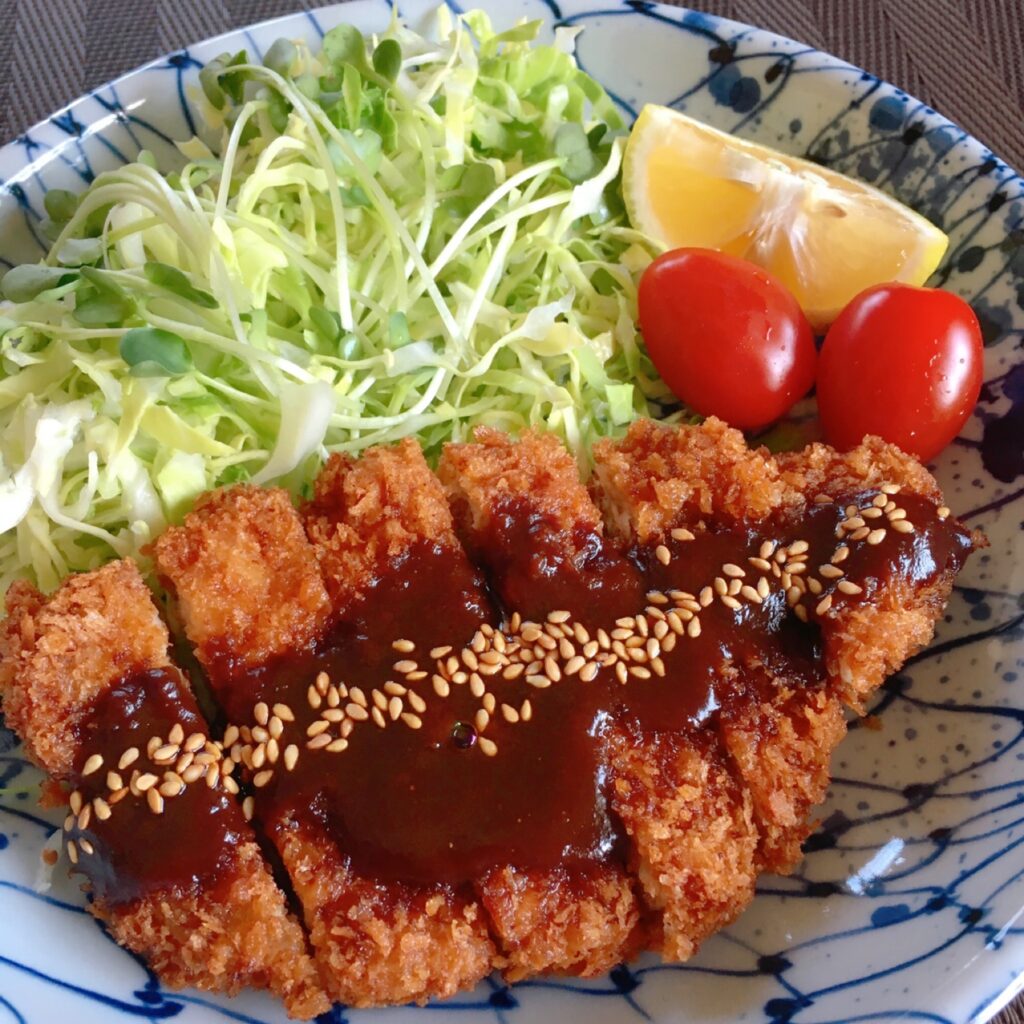
Misokatsu(みそかつ)
What kind of dish is Misokatsu⁇
This is a Nagoya specialty miso katsu recipe. Pork loin is covered with bread crumbs, fried, and served with a miso-based sauce.
pork cutlets = tonkatsu
The state without this sauce is tonkatsu. The unique sauce goes well with everyone’s favorite tonkatsu. Please use Haccho miso, which is said to have originated in Nagoya, for this dish.
Miso katsu is often served as a set meal with shredded cabbage, soup, and pickles. However, other recommended dishes include miso katsudon (rice bowl with miso katsu and cabbage served on rice) and miso katsu sandwiches.
It is delicious if you put the leftover miso sauce on konjac, tofu, vegetables, etc. and bake in the oven until they are browned.
What kind of food is Hatcho miso?
Hatcho miso is a soybean miso made only from soybeans and salt. It is a specialty product of Nagoya.
The main ingredients for miso in other regions are rice, barley, soybeans, and salt.
This miso is reddish brown and dark in color, so it is also called “red miso”. It also has a moderately sour taste, a strong umami taste, and a unique bitter and astringent flavor.
The name “red miso” is not limited to Hatcho miso, but refers to the entire miso that has been fermented for a long time and has turned red.
By the way, regular miso takes half a year to ferment, while red miso takes over a year (Haccho miso takes two years).
Aichi Prefecture, where Nagoya is located, has a hot and humid climate, which often spoils miso during miso making, making it impossible to produce stable miso.
Therefore, around 1830 to 1844, the ”Miso Tamazukuri method,” which made miso balls only from soybeans and directly added koji mold to the soybeans, became established.
In addition, by coincidence, the hot and humid climate of Nagoya facilitates the decomposition of soybeans, creating the conditions for producing miso with a strong umami flavor and a distinctive dark color.
“Haccho miso” has long been useful in maintaining people’s health by replenishing salt and protein that are lacking due to perspiration.
Since the people of Aichi prefer strong flavors, it has taken root in Aichi Prefecture as a representative seasoning for so-called “Nagoya cuisine” such as miso katsu, miso oden, miso stew, and miso nabe. Today, it is widely recognized as a special product.
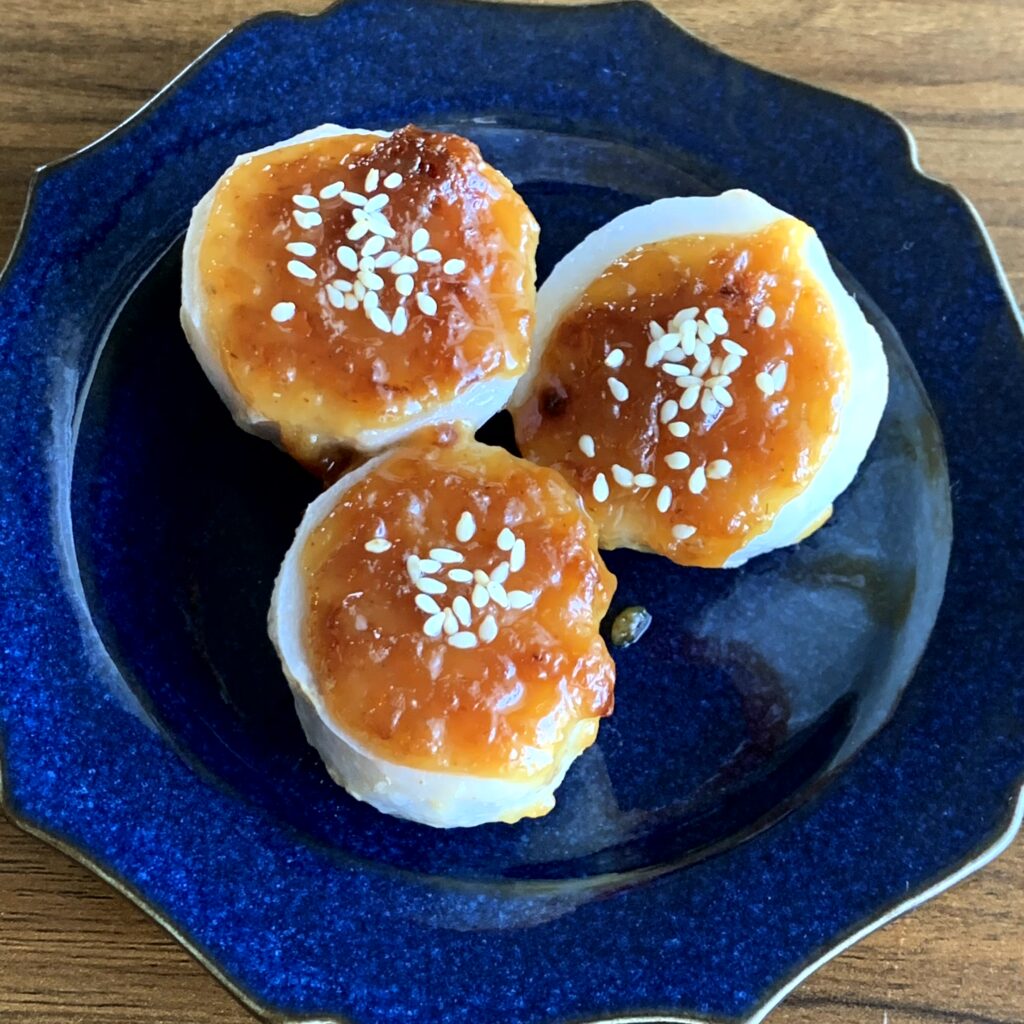
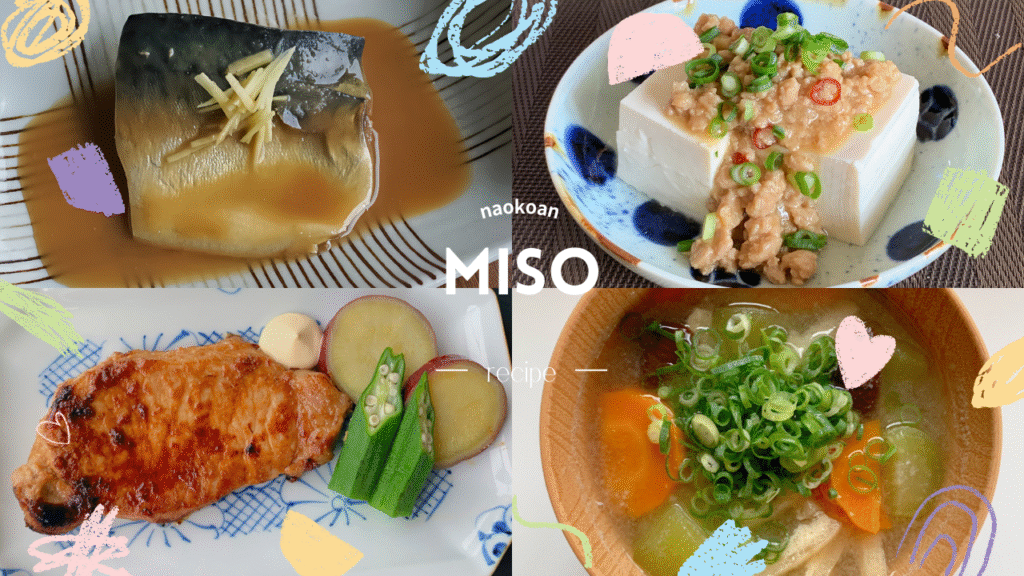
Hatcho miso, produced by a company called Kakukyu in Nagoya, is famous. Check out their official website. 👉 https://www.kakukyu.jp/products.asp
NUTRITION FACTS : Miso katsu (Pork cutlet with miso sauce)

Tonkatsu
- 727 Calories Protein 38.5 g Total Fat 49.5 g Total Carbohydrates 30.5 g Sodium 3.1 g
※For 100g of ingredients, use 3g of flour, 8g of eggs, and 15g of breadcrumbs. Oil absorption rate is 8%.
Miso Katsu TOTAL NUTRITION VALUE
- 963 Calories Protein 46.4 g Total Fat 56.4 g Total Carbohydrates 63.8 g Sodium 7.5 g
INGREDIENT : Miso katsu (Pork cutlet with miso sauce)
- Pork loin 2 pieces (200g)
- Salt 2g
- pepper moderate amount
- Egg (16g)
- Water 5g
- Wheat flour(cooking flour) 6g
- Bread crumbs(panko) 30g
- Oil moderate amount (16g)
- ☆Hatcho miso 40g
- ☆Sugar 20g
- ☆Sake 20g
- ☆Water 40g
- ☆Mirin 10g
- Sesame seeds 5g
How to make Miso katsu (Pork cutlet with miso sauce)
- The pork loin I used this time was sold with pre-scored cuts. If you are using unscored pork, make multiple cuts with a knife. This step will prevent the meat from shrinking.
- Rub salt and pepper on the surface of the pork loin.
- Mix the egg and water well.
- Lightly dust the seasoned pork loins in the flour. (We recommend using non-sticky “cooking flour.”)
- Dip the pork in the egg.
- Coat each of them well with the bread crumbs(panko).
- Fry in oil heated to 170°C for 5 minutes. (170°C is 388°F.)
- Then drain on a wire rack.
- While the meat is frying, add Hatcho miso, sugar, sake, water, and mirin to a saucepan.
- Heat over medium heat until the sauce thickens slightly.
- Pour the miso sauce over the tonkatsu and sprinkle with sesame seeds.
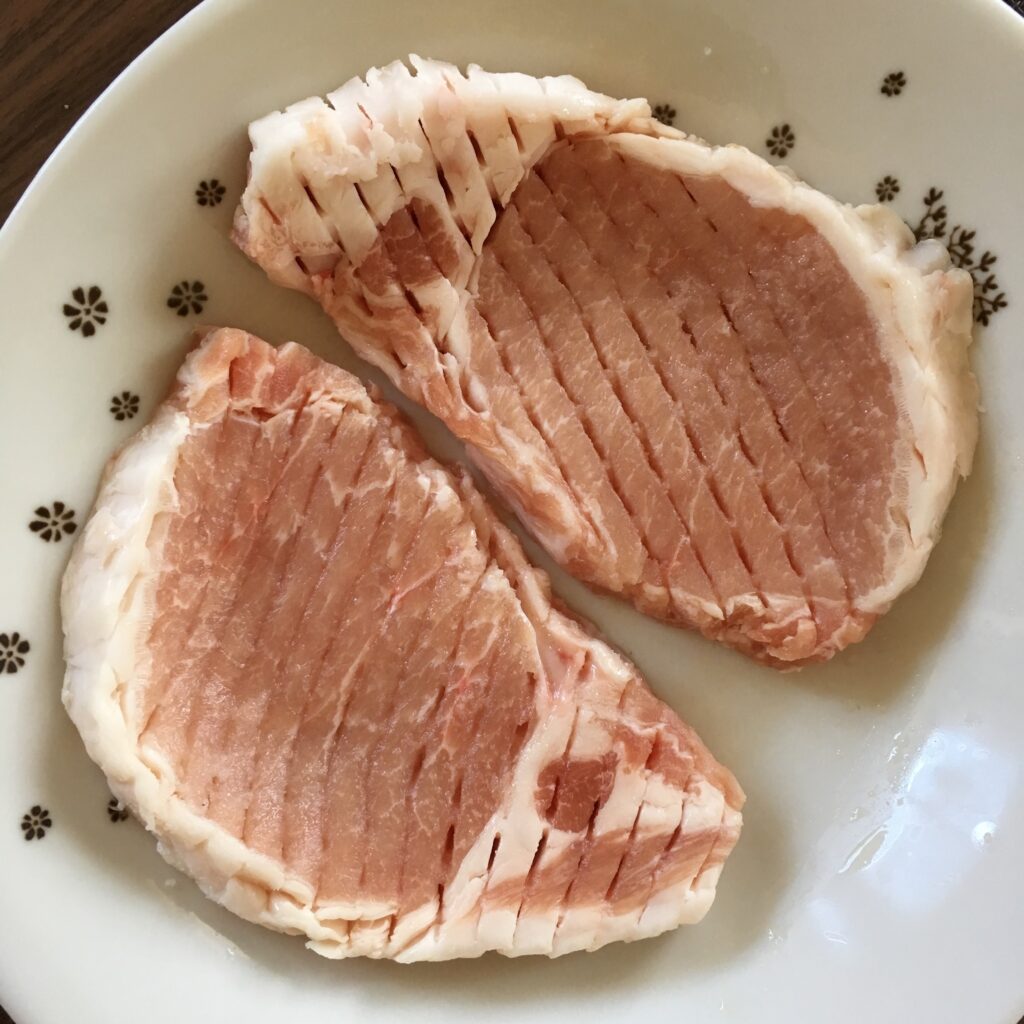
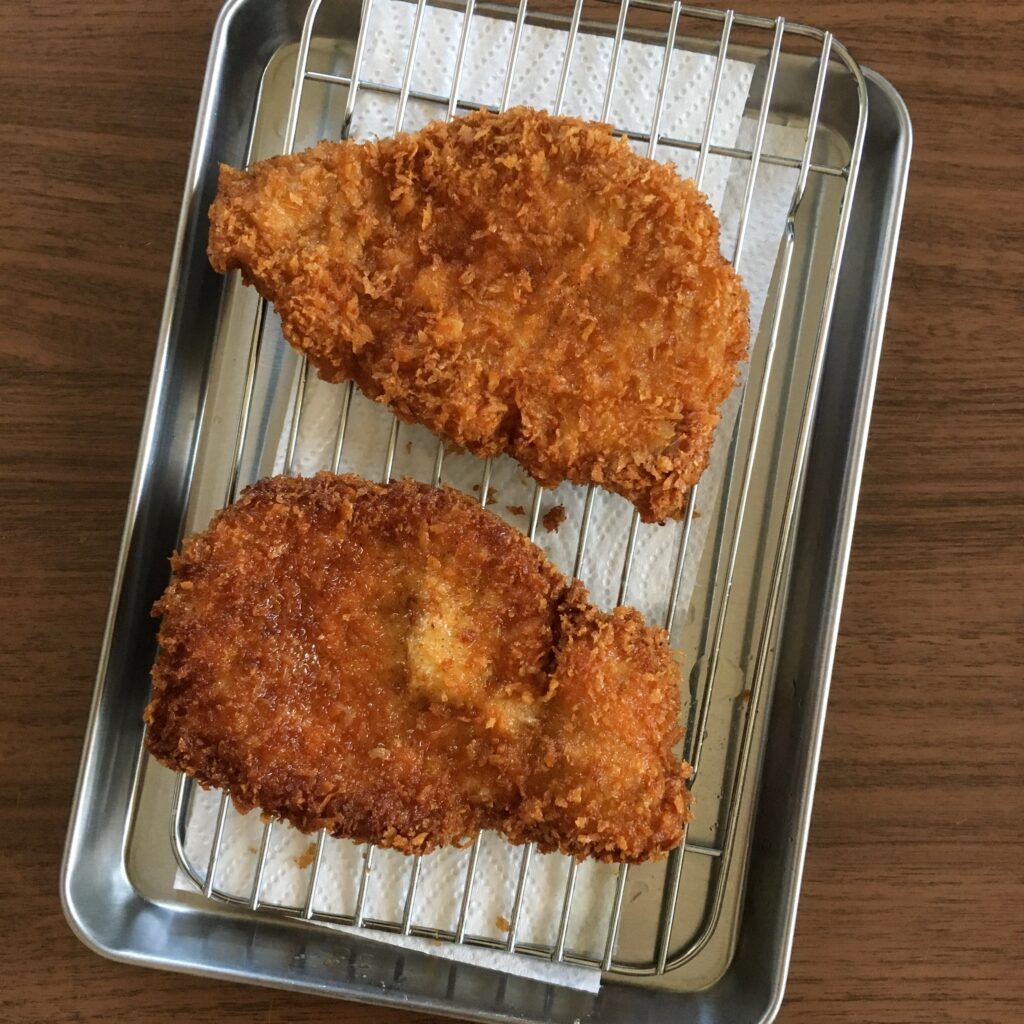
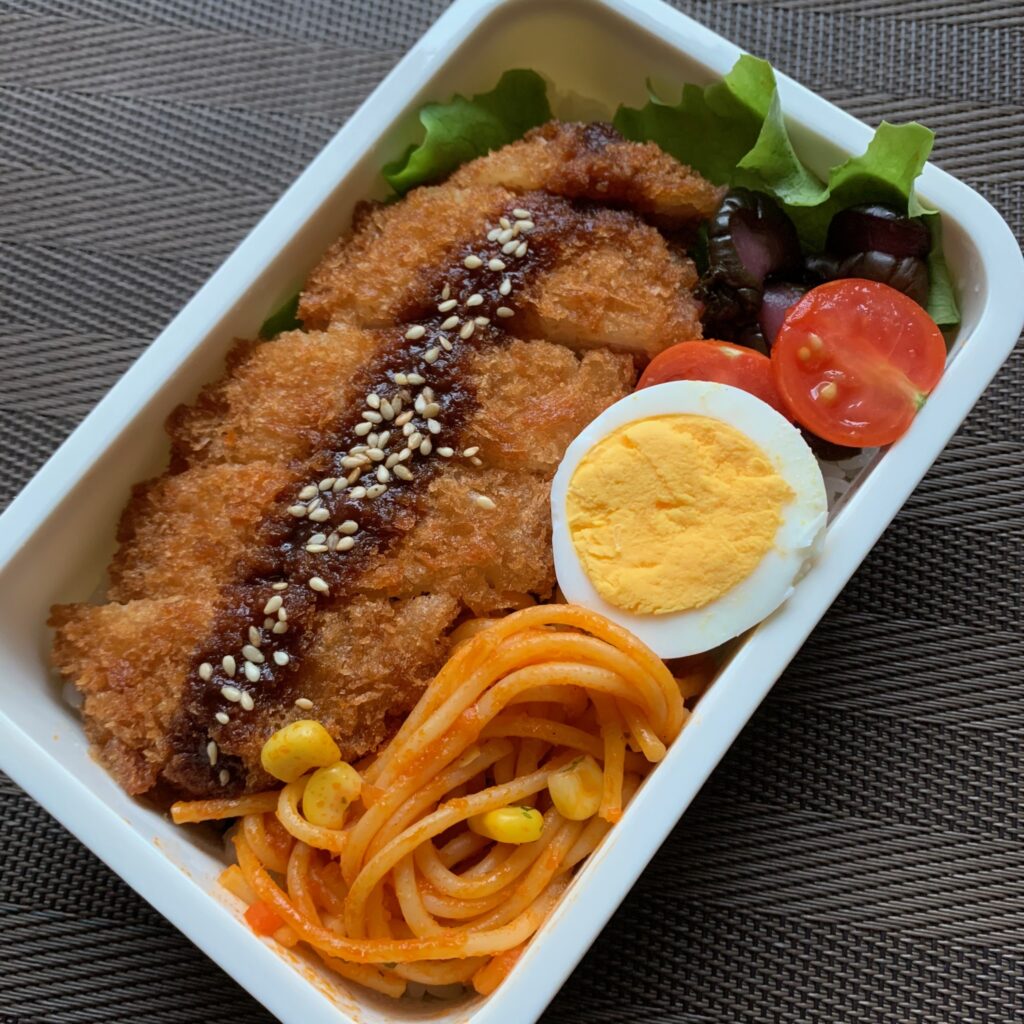
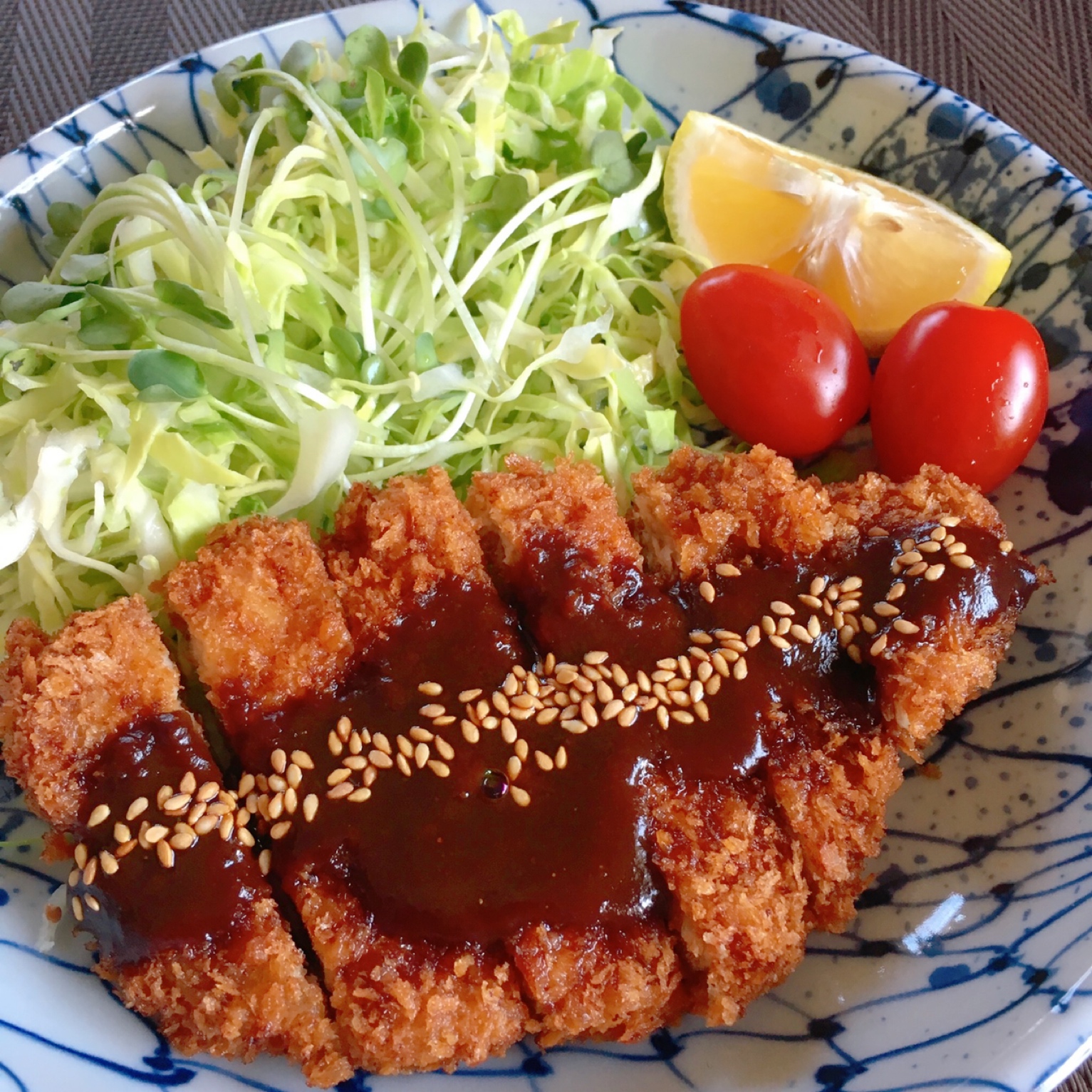

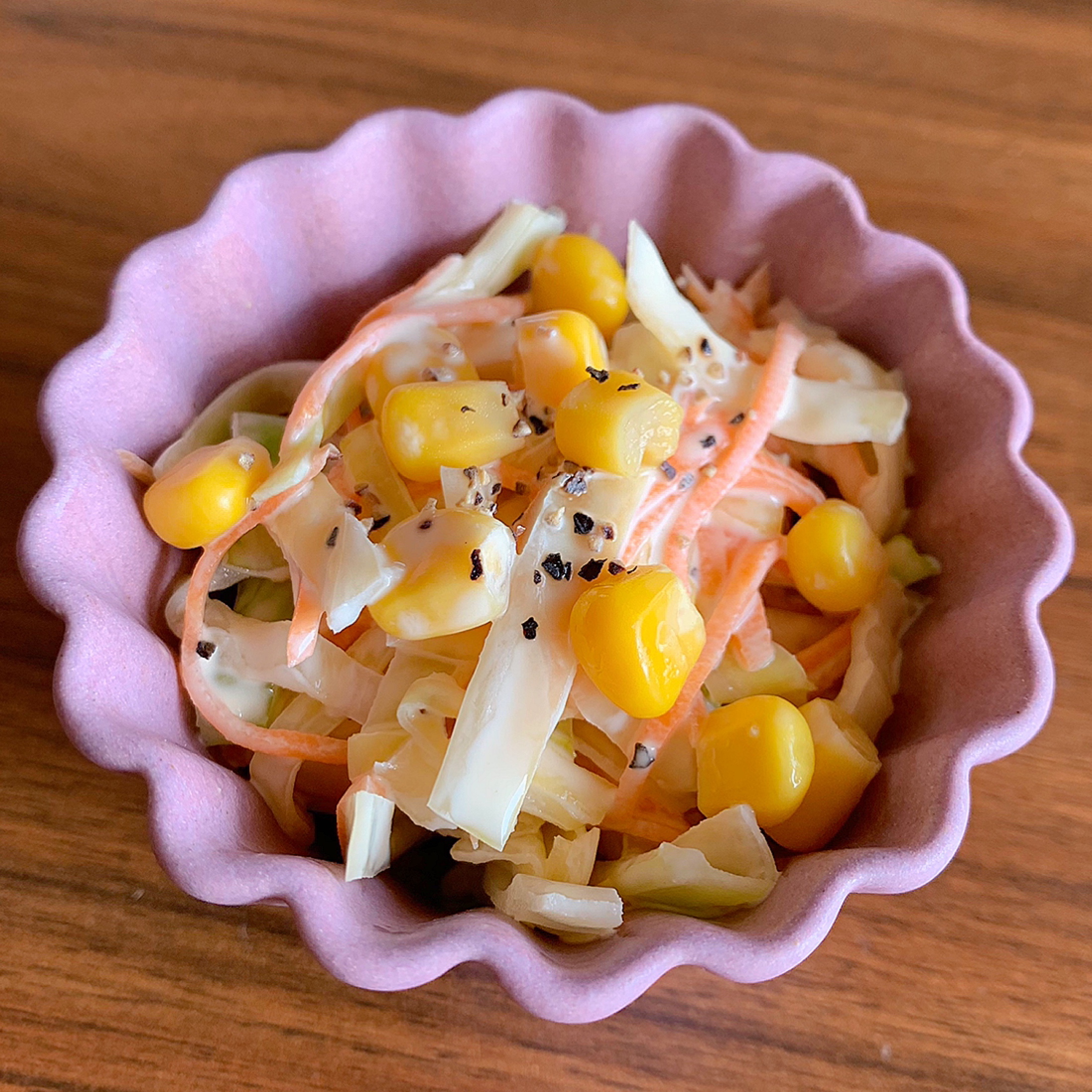
コメント